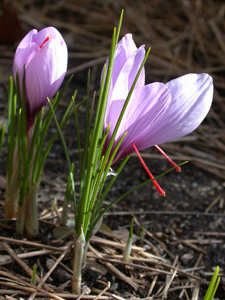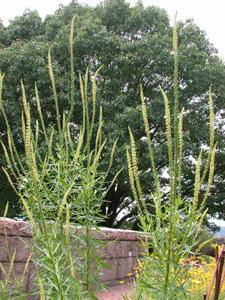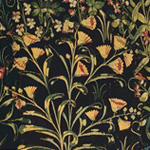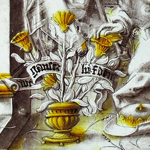Vegetable Gold
Incomparably the most important yellow in medieval painting is the metal gold. Yellow pigments, however, played a significant part in the pageant of medieval technique. One of the most important services required of them was to imitate the appearance of gold. Another of their chief functions was to modify the qualities of greens, and to a less extent, of reds. Of all their uses, perhaps the least important was to represent yellow things.
???Daniel Thompson, The Materials and Techniques of Medieval Painting
The vegetable yellows used in medieval illumination were more readily prepared and much safer to use than mineral yellows like realgar or orpiment. Above, left: The brilliant red-orange stigmas of the autumn-blooming saffron crocus, used by medieval cooks as a colorant and a seasoning, were also exploited by illuminators. Right: Flower spikes of weld, the most ancient yellow dyestuff known. When processed as a pigment, this weedy biennial provided manuscript painters with a bright vegetable yellow.
A number of plants were exploited for coloring matter in the Middle Ages, whether to tint foodstuffs or to furnish dyes and pigments. By no means all, or even many, artist’s pigments were of vegetable origin; mineral colors were used for wall painting, where the more delicate and fugitive nature of vegetable colors was inappropriate. In book painting, a combination of vegetable and mineral colors was employed. The same plant that yielded a dye for textiles could be prepared as a pigment and used by illuminators. Several species produced a viable yellow, including weld, saffron, and celandine; as Daniel Thompson observes, these vegetable yellows served both to imitate the appearance of gold, and to modify greens and reds.





